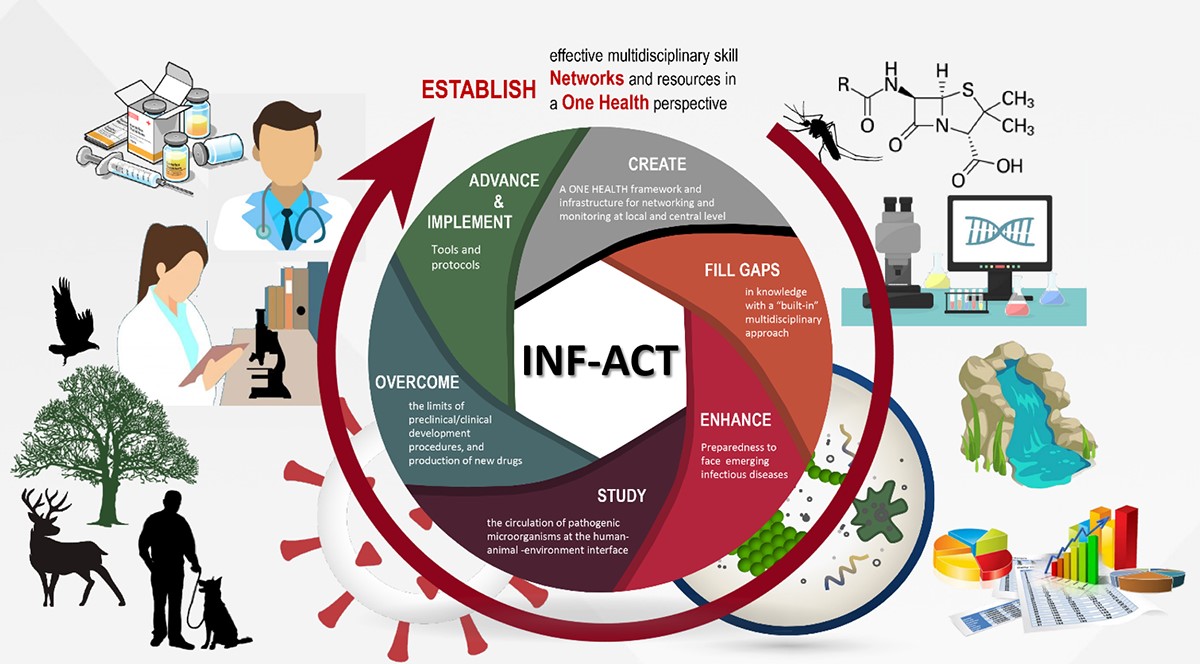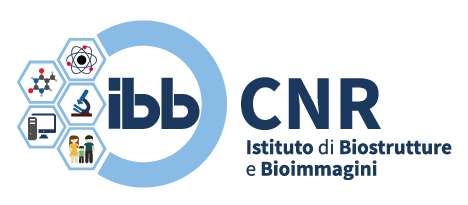Description
According to WHO, emerging infectious diseases are classified as “diseases caused by newly-identified or previously unknown pathogens causing public health concerns at the local as well as at the international level”.
In this context, this Extended Partnership (PE) project opportunity on the topic of emerging and re-emerging infectious diseases with epidemic/pandemic potential offered by the National Reprise and Resilience Program (NRRP), represents a formidable tool to:
- fill gaps in knowledge of the biological characteristics on highly diffusible pathogens with a “built-in” multidisciplinary approach;
- enhance the level of basic knowledge on highly diffusible pathogens and, in case of vector-borne diseases (VBDs), their arthropod vectors;
- create a framework and infrastructure for centralized systematic monitoring of the genomic characteristics and evolution of multiple pathogens with epidemic potential circulating in humans, animals and in the environment;
- study the circulation of pathogenic microorganisms at the human-animal interface (both domestic and wild) and the risk of spill-over events;
- define shared protocols for the implementation of monitoring and contrast measures through the application of innovative tools;
- set up a network and infrastructure for the centralized systematic monitoring clinical markers comprising clinical severity in adults and children, immune responses, as well as gender based differences;
- overcome the limits of preclinical/clinical development procedures, and production of new drugs with new technological solutions – establish effective multidisciplinary skill networks and resources;
- advance tools optimizing the use of data from multiple sources for One Health early warning, risk assessment and for the prioritization of public health interventions to improve the country’s overall preparedness towards potential emerging (and even re-emerging) infectious threats to public health.

Objectives and expected results
IBB has a long-lasting experience in the field of structural biology applied to infectious diseases. The group of Dr Berisio has published over 120 publications on this topic and attracted several European grants on this topic. We use a multi-disciplinary approach, through the integration of molecular biology with computational and structural biology, biochemistry and biophysics. This molecular focus is integrated through a network of interactions with a European partnership with knowhow in immunology, bacteriology and virology.
The use of antimicrobials, even when appropriate, creates a selective pressure for resistant organisms. Therefore, pathogens which seemed to be under control re-emerge in drug-resistant forms, and their progeny quickly become the dominant type throughout the microbial population. The increasing spread of multi-drug-resistant species (MDR) has been identified by the World Health Organisation as one of the three greatest threats to mankind. Among most scary emerging pathogens is a group of six nosocomial pathogens (Enterococcus faecium, Staphylococcus aureus, Klebsiella pneumoniae, Acinetobacter baumannii, Pseudomonas aeruginosa and Enterobacter spp.) named with the acronym ‘ESKAPE’ because capable of ‘escaping’ the biocidal action of antibiotics classified as highly important for human medicine. Among ESKAPE bacteria, three are the most problematic, the highly resistant Gram-negative (Gram-) Klebsiella pneumoniae, Acinetobacter baumannii, and Pseudomonas aeruginosa, all typically associated with infections in severely ill hospitalised patients and considered by WHO as CRITICAL. Main aims of IBB in INF-ACT focus on emerging bacterial and viral pathogens to produce valid therapeutic solutions that constitute an alternative to antibiotics. These include vaccine antigens, drug adjuvants that revert bacterial resistance and phage-originated molecules.
Emerging viruses are also tackled in INF-ACT. IBB has led several projects on the understanding of mechanism of action of SARS-CoV-2. In INF-ACT, IBB will identify strategies to tackle, beside SARS-CoV-2, emerging viruses like the West Nile and the monkeypox viruses.
Project proponents and involved entities
- Consiglio Nazionale delle Ricerche (CNR)
- University of Pavia (UniPV)
- University of Padua (UniPD)
- University of Catania (UniCT)
- Italian National Institute of Health – Istituto Superiore di Sanità (ISS)
- University of Milano (UniMI)
- University of Rome “Sapienza” (UniSAP)
- University of Bologna (UniBO)
- Association of Italian Veterinary Public Health Institutes – Associazione Istituti Zooprofilattici Italiani (AIZS)
- Fondazione Bruno Kessler (FBK)
- University of Siena (UniSI)
- University of Cagliari (UniCA)
- University of Naples “Federico II” (UniNA)
- University of Bari “Aldo Moro” (UniBA)
- University of Turin (UniTO)
- Humanitas University (HUniMED)
- Fondazione Istituto Nazionale di Genetica Molecolare, Milano (INGM)
- Istituto di Ricerche Farmacologiche “Mario Negri” IRCCS, Milano (IRFMN)
- IRCCS Sacro Cuore Don Calabria Hospital, Negrar, Verona (ISCDC)
- Fondazione Policlinico Campus Biomedico (FPCBM)
- Università Vita-Salute San Raffaele (UniSR)
- Università Cattolica del Sacro Cuore (UCSC)
- IRBM S.p.A.
- Bambino Gesù Children’s Hospital – Ospedale Pediatrico Bambino Gesù (OPBG)
- Istituto Mediterraneo per i Trapianti e Terapie ad Alta Specializzazione (ISMETT)
Project leader
Dr. Rita Berisio (IBB Unit leader)
Project code
PRR.AP024.001
Received funds
€ 360.575,00
Time frame
01/11/2022 - 31/10/2025
Progress status
99%

